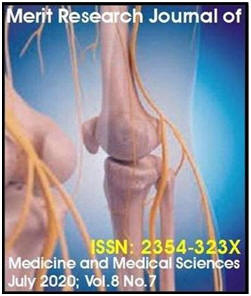
|
|
|
|
|
 |
/ / MRJMMS Home / / About MRJMMS / / Submit Manuscripts / / Call For Articles / / Editorial Board / / Archive / / Author's Guide / /
|
Other viewing option
Search Pubmed for articles by:
Shabir
S |
Assessment of Nurses Practices for the Prevention and Management of Central Line Insertion Associated Blood Stream Infection (CLABSI) |
|||
|
Sidra Shabir1, Kouser Parveen2, Muhammad Hussain3, Muhammad Afzal4 and Dr. Sayed Amir Gilani5 |
||||
|
1Post
RN student
Received: 02 July 2020 I Accepted: 22
July 2020
I Published: 28 July 2020 I Article ID:
MRJMMS-20-100 |
||||
|
Abstract |
||||
|
Central line
insertion is a very common procedure in the hospital setting of
Pakistan, which is facing a high (CLABSI) central
line-associated bloodstream infection rate (9/1000 days
mainline). Limited resources Infection always cost-effective and
it increased the burden of the hospital and increased the
suffering of the patients as well as patientís families. The
study aimed to assess the nursing practices for adherence to
standard protocols towards the management of central line
insertion and prevention from central line-associated
bloodstream infection. A cross-sectional study was conducted in
a tertiary care hospital. The sample size was 200 nurses who
were working in Intensive Care Units. A simple random sampling
technique was used to collect the data. The study tool comprises
an observational checklist consisted of 26 items. The study
duration was 4months. Ethical considerations followed by taken
written consent. Nurses have good self-reported experiences and
practices to manage central line insertion. In this study, the
results show that the most nurses were working in the Intensive
Care Unit (93.3%) and neonatal intensive care unit (75.0%)
reported that they wash their hands and wipe the access port and
catheter axis before reaching the catheter. All units used an
iodine antiseptic solution powder fear at the place of
insertion. This study will help the nurses to increase their
understanding and knowledge about the care of central line
insertion. This study will guide the nurses to reduce the
infection rate through best practices linked to central line
insertion and during handling of the central venous pressure.
|
Merit Research Journals© 2021 || Advertisement | Privacy policy.
